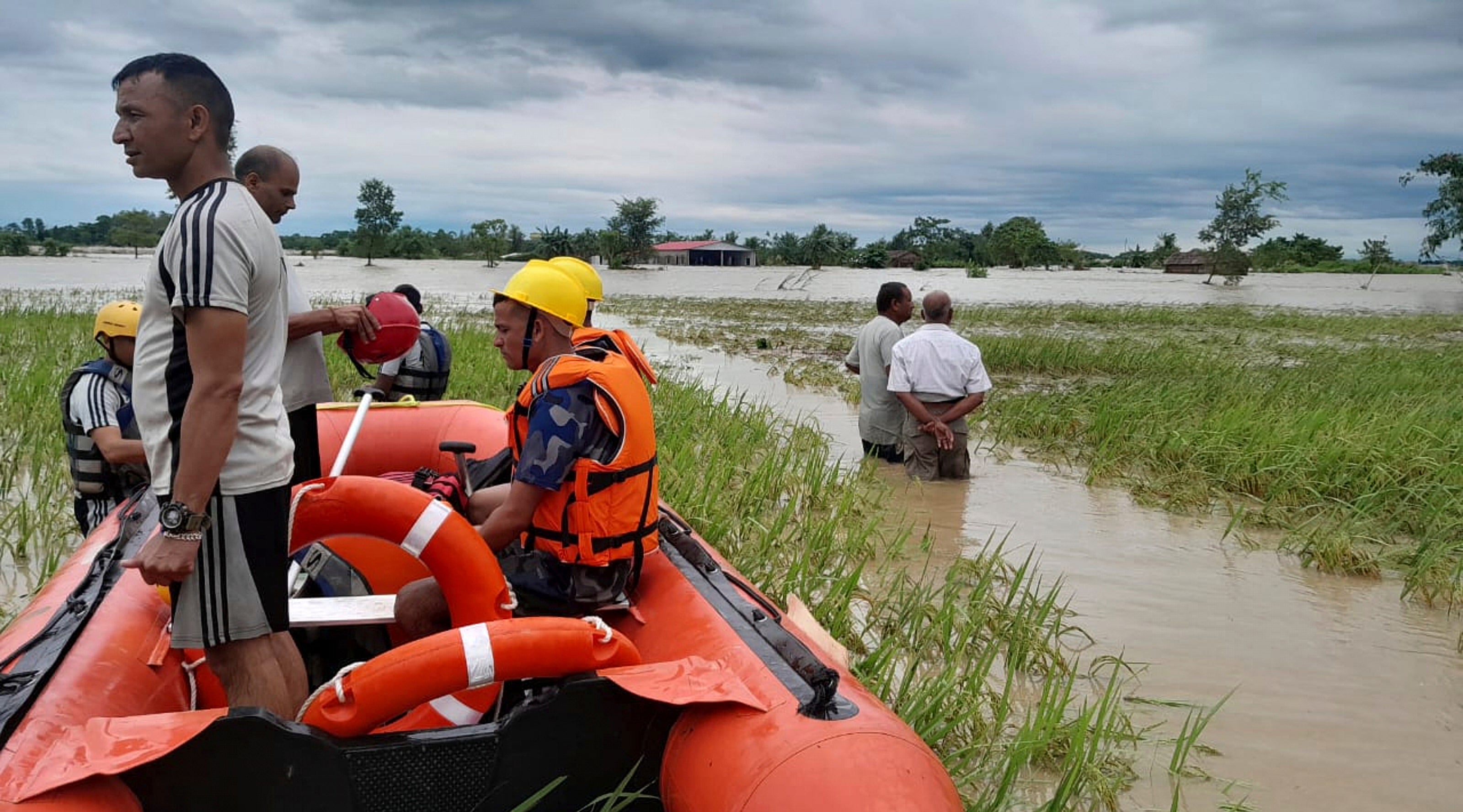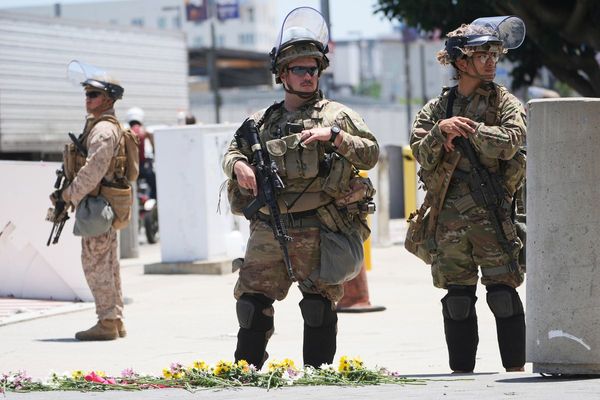Entire villages in eastern Nepal have been swept away after days of relentless rainfall triggered landslides and flash floods, killing at least 47 people and leaving several missing, officials said.
The heavy rain, which began late last week, caused widespread destruction across the mountainous Himalayan nation, blocking major highways, submerging homes and forcing thousands to flee to safer ground.
Authorities said 35 people were killed in separate landslides in Ilam district, a hilly region bordering India known for its tea plantations.
Whole communities were buried or washed away as slopes gave way under torrential rain, Nepal’s National Disaster Risk Reduction and Management Authority said.
“Rescue efforts for the missing persons are going on,” said Shanti Mahat, a spokesperson for the agency, as helicopters and army teams were deployed to reach cut-off villages.
“Many areas remain inaccessible because roads have been washed away or blocked by debris.”

Six members of a family were killed when a landslide buried their home as they slept, said Bholanath Guragai, an assistant administrative officer in Ilam. Dozens more are feared trapped.
In Kathmandu, the government issued a severe rainfall warning for eastern and central regions, shutting down major highways and grounding domestic flights on Saturday because of poor visibility. Some routes were partially reopened on Sunday, but authorities warned more landslides were possible as heavy rain continued.
The country’s largest international airport in Kathmandu remained open, though domestic flights were “largely disrupted,” said airport spokesperson Rinji Sherpa.
The deluge also caused flooding in parts of southern Nepal and lightning strikes that killed at least three people in separate incidents. The Koshi River, one of the region’s largest and most flood-prone waterways, was flowing above danger levels, forcing authorities to open all 56 sluice gates of the Koshi Barrage.
All traffic has been banned on the bridge for safety reasons, said Dharmendra Kumar Mishra, district governor of Sunsari.
Nepal’s Army and police have been mobilised to ferry survivors to higher ground and airlift those in need of medical care.
Photos showed soldiers carrying residents through chest-high floodwaters and retrieving belongings from submerged houses.

In the capital, rivers overflowed their banks, flooding low-lying neighbourhoods and leaving streets underwater. However, no major casualties were reported in Kathmandu.
The disaster struck just as hundreds of thousands of people were returning to the capital after celebrating Dashain, Nepal’s biggest festival. Highways were clogged with traffic over the weekend, and authorities declared a national holiday until Monday as a precaution.
Across the border in India’s West Bengal state, heavy rainfall from the same weather system caused deadly landslides in the hill district of Darjeeling, where at least seven people were killed, local media reported.
“Seven dead bodies have already been recovered from the debris,” said Abhishek Roy, a Darjeeling district police official. “We have information about two more people, and work is ongoing to recover their bodies.”
India’s prime minister, Narendra Modi, expressed condolences on social media, saying: “We stand with the people and Government of Nepal in this difficult time. As a friendly neighbour and first responder, India remains committed to providing any assistance that may be required.”
Flooding and landslides are common during Nepal’s monsoon season, which usually runs from June to mid-September but has lingered unusually long this year. More than 220 people were killed around the same time last year, underscoring the country’s growing vulnerability to extreme weather linked to climate change and rapid deforestation.
Meteorologists warned that rain would continue until at least Monday, with officials saying they were taking “maximum care and precautions” in affected areas.
At least 4 dead and more still missing as devastating flash floods hit Arizona
Typhoon Ragasa mapped: Strongest storm of 2025 nears China landfall
Mount Everest rescue live: Race against time to rescue 200 hikers stuck in blizzard
Boris Johnson says he went ‘far too fast’ on net zero – report
£10m in fines paid by water firms funds restoration of sewage-polluted waterways
Death toll from Typhoon Bualoi, Vietnam’s deadliest storm this year, rises to 51







